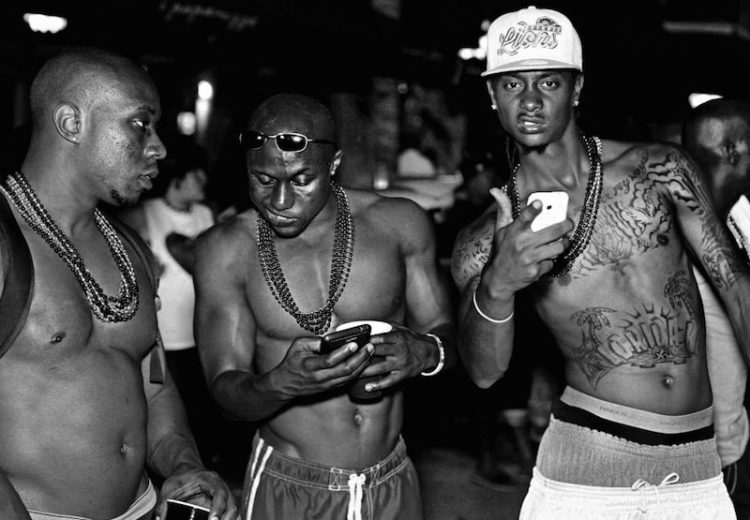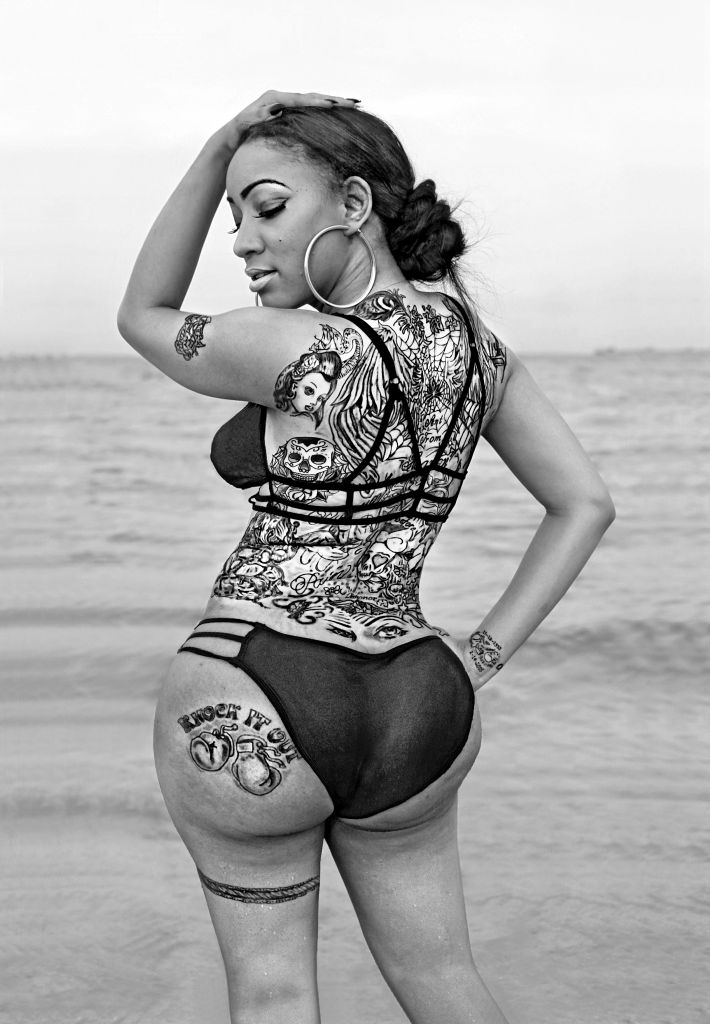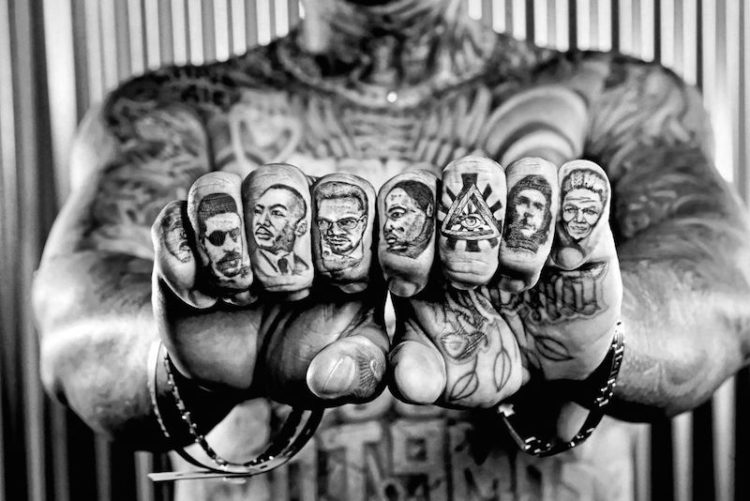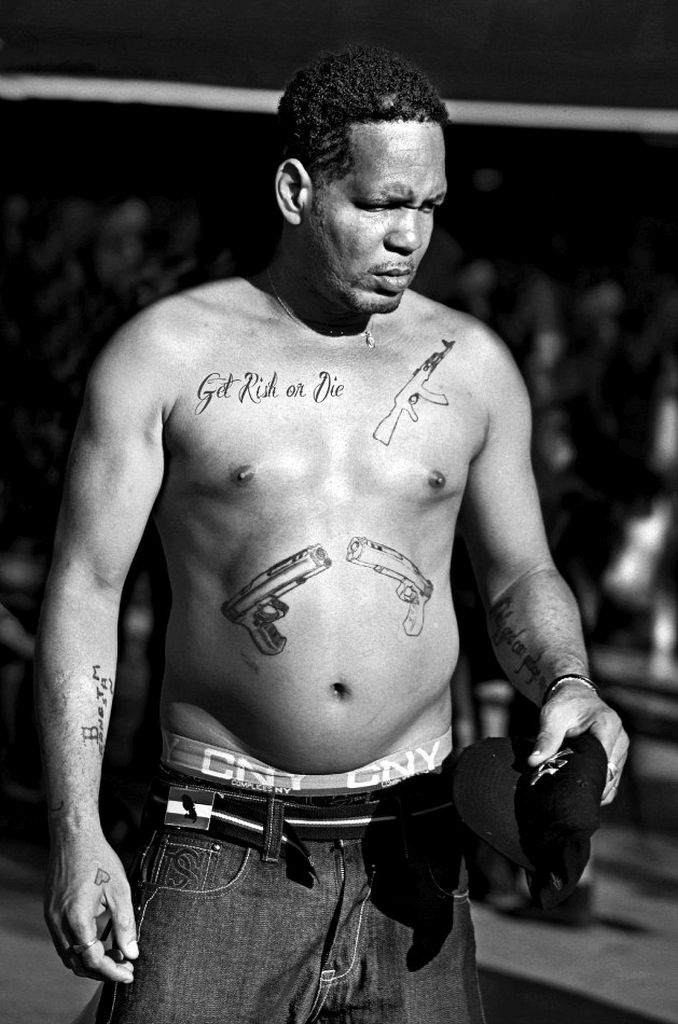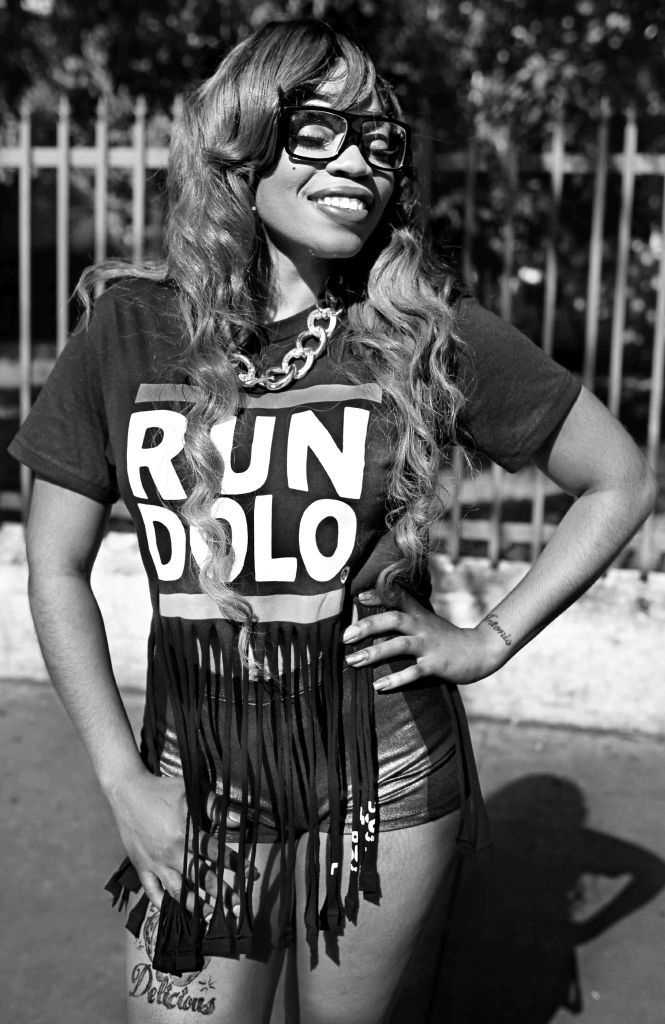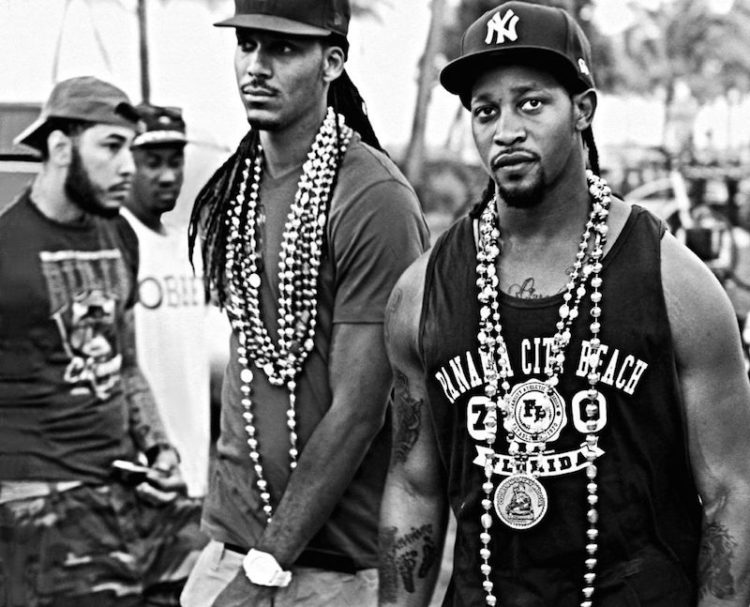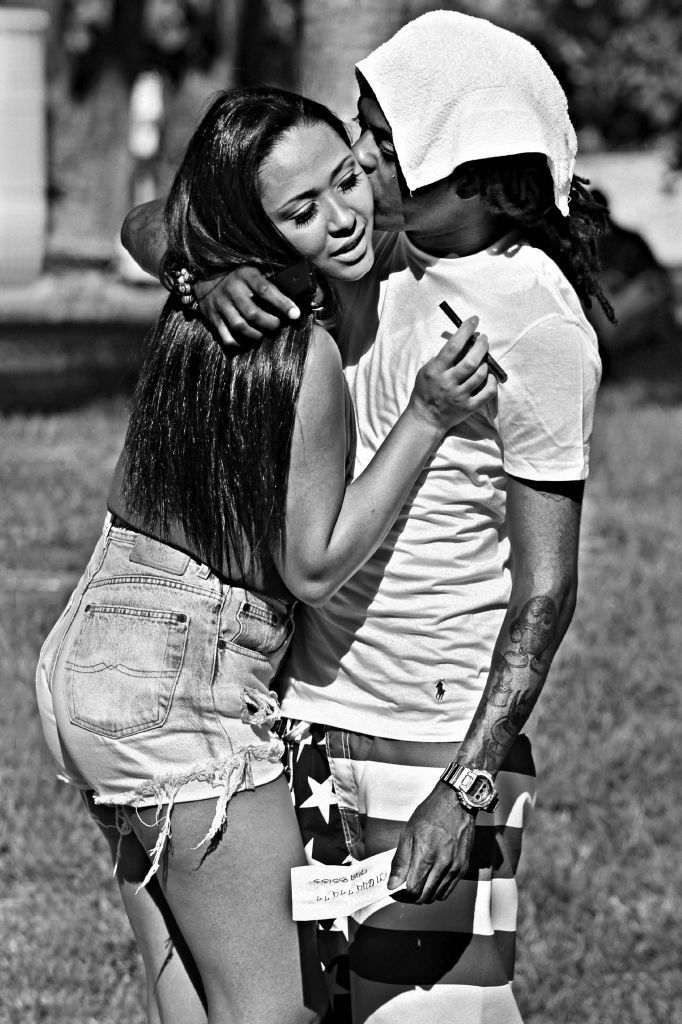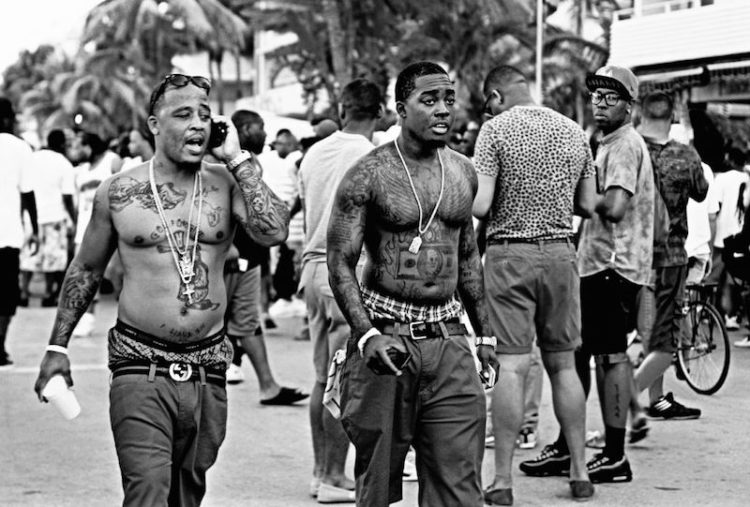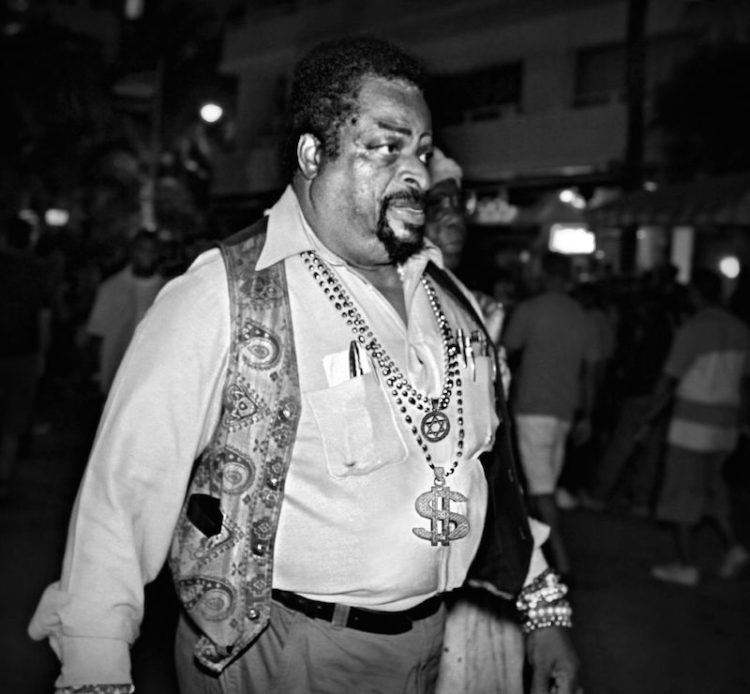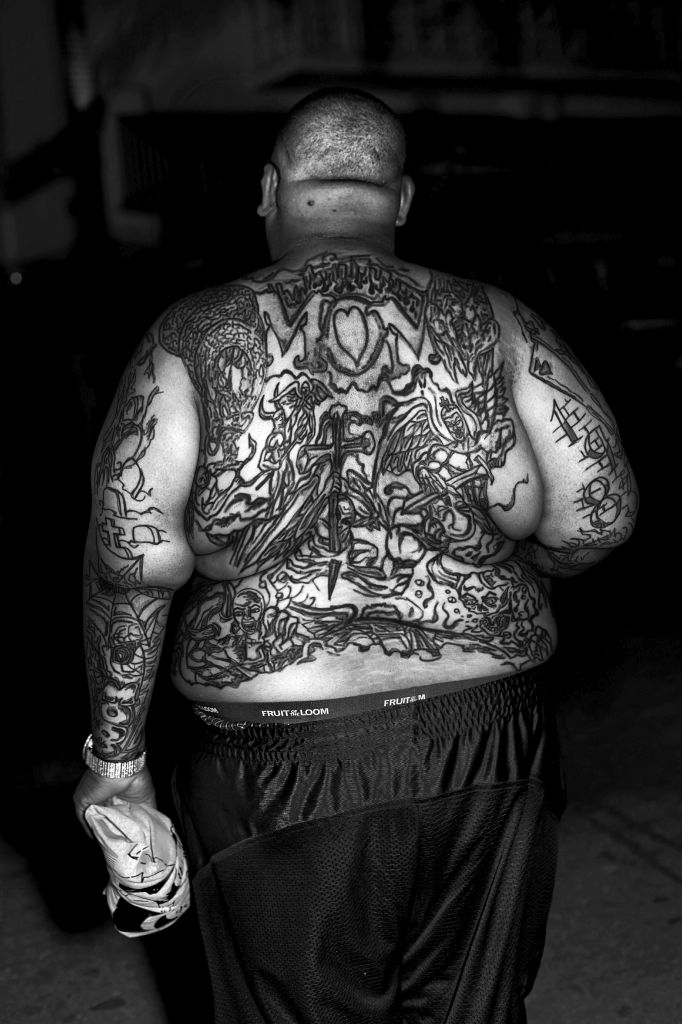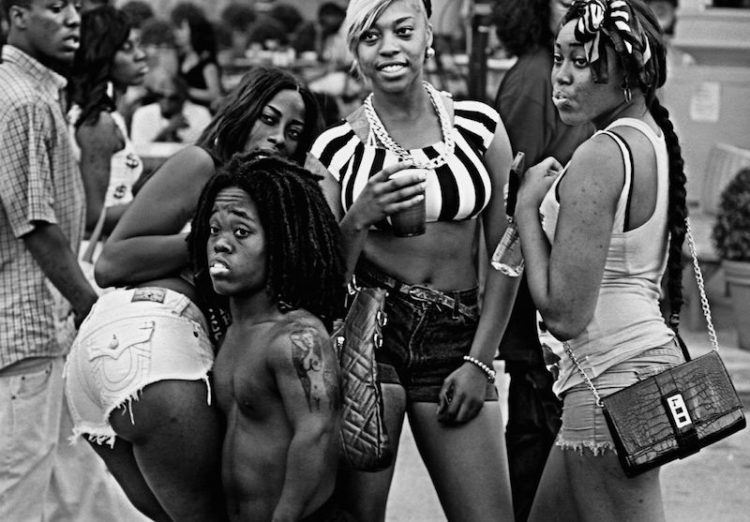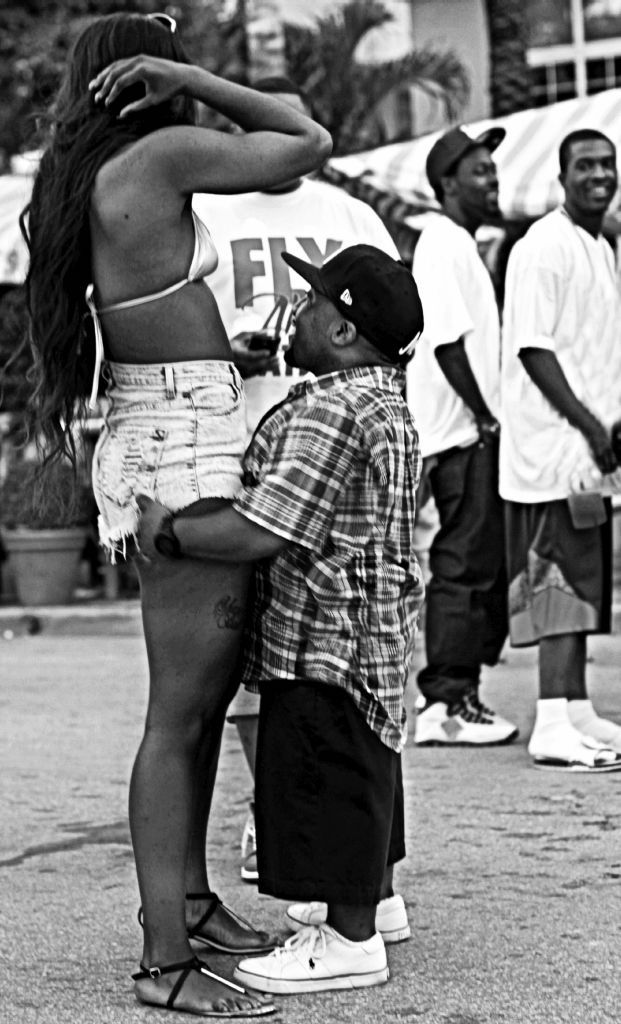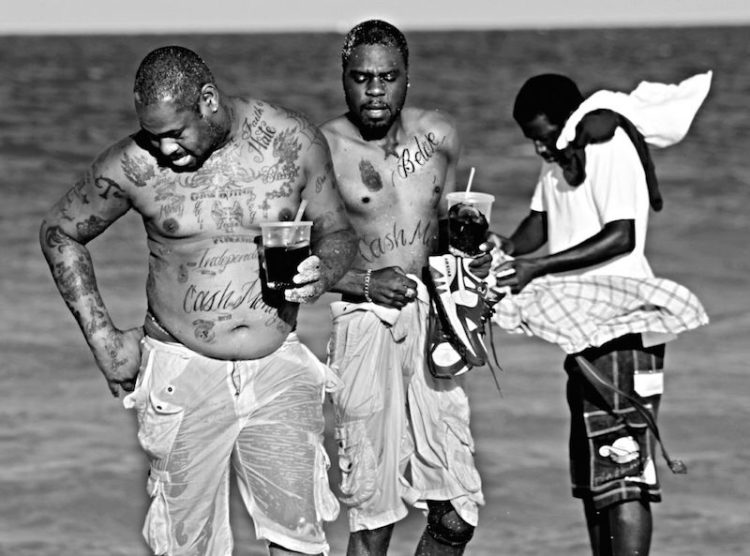During two years, the Moroccan photographer Souhayl A immersed himself in gangs in New York, LA and Miami. Here are some images from a thrilling, risky and beautiful project.
What did you learn from your experiences with the gangs? From their way of life?
First, I would like to highlight that there is a common misconception in respect of the ‘gangs’ phenomenon, which can so often and typically be related to the ethnic origins of people. There is extensive research which supports the view that gangs can be related to social origins and are influenced by a range of complex structures within society. A number of studies have concentrated on gang formation commonly associated to Afro-Caribbean and Latin ethnic groups, the close relationship between low economic status and deprivation, thus discounting the possibility of gang culture amongst socially affluent and economically rich neighborhoods.
Mafia organisations have acquired important territories, replacing the role of a deficient state gangrened by corruption
In these studies, there is reference to gangs generally developing in large agglomerations, on the periphery or in neighborhoods where the poverty rate is high and in general, they are all structured in the same way. In countries where fiscal studies have shown high rates of poverty and economic crisis there are thematic patterns to indicate that gangs are formed by gaining territory, through coercive force and corruption within local authorities, and reference to an ‘underground subsistence economy’; by drug or human trafficking as well as through prostitution. For example, there is notoriety amongst Brazil’s favelas or Marasalvatrchas lands in El Salvador, where mafia organisations have acquired important territories, replacing the role of a deficient state gangrened by corruption (through legal systems and the police).
In countries such as the USA, there are similar patterns of gang formation through an almost established set of territorial silos, of non-rights, built by the same mafia methods. While the state publicly demonstrates attempts to combat such social issues, it equally appears to tolerate the operations and functions because of a certain economy that is generated. Thus, in a materialistic society of ‘hyper- capitalism’, as the American society, it is not surprising therefore, to see the phenomenon of gangs generating a consumer market, a subculture proper to them, notably by hip-hop music or rap…
For me, gangs are the dark side of the ‘American Way of Life’, a degeneration produced by the decline of religious or civic morals
A lifestyle that has long been freed from all morals and whose codes of seduction are based on an attitude of permanent ostentation and boasting: ‘Get rich or die’, ‘Get the money, fuck the bitches’… This is called ‘Gangsta Way of Life’. In other words, what the honest citizen tends to acquire by a hard life of work and effort, the gangster wants to have it ‘right now’ and whatever means are used to achieve it.
For me, gangs are the dark side of the ‘American Way of Life’, a degeneration produced by the decline of religious or civic morals and the advent of the consumer society with its liberal-libertarian lifestyle.
How was it to not be a gangster, and dealing with them as an outsider? What was your biggest challenge while doing the project?
The story began in 2012, whilst I was in Paris, and the catalyst for this project was via the social network site couchsurfing.org. An American girl with whom I had contact via the site, visited me in Paris for a week. During this time, the narrative and story of her life unfolded, and I learnt she had cousins in the South-Bronx and on the East Coast of America. She showed me their profiles on Instagram… and I had an idea within my sub-conscious of asking her immediately if I could photograph them. Then began a period of six months of negotiation, until I could finally land in the USA for an initial introduction to the subject.
You have to thrive on high levels of adrenaline, incorporate and understand human psychology, constantly use your own sixth sense
It transpired that within the first four days, I actually photographed very little. Yet I feel that this allowed me to draw the contours of the project, and to tame and distinguish between what I wanted to photograph afterwards, of what I considered to be outside of my competence and limits. This will be followed by two more trips, that I hope in doing so will enable me to enhance my work with further depth and substance to set out to achieve what I want to reflect in this project.
The main difficulty of the project was to succeed in overcoming its fears in order to inspire confidence and acceptance by members of the gang that I did not know. To achieve this, it is obviously necessary not only to have a strategy but also to set limits that should not be exceeded. In other words, you have to thrive on high levels of adrenaline, incorporate and understand human psychology, constantly use your own sixth sense or ‘intuition’ to not only capture the essence of your subject but to feel the danger when it happens, in order to preserve your physical integrity and of course not risk your own life unnecessarily.
I wanted to dissect the codes of seduction between men and women in this area
Exercising another profession outside of photography I could not adopt an immersion strategy as sometimes the photos-reporters do, so I made four trips, totaling thirty-five days. From the first trip, it became clear to me that the relationship and flirtatious interplay between men and women in the ‘gangsta’ environment was the most photogenic subject, and that my project had to be oriented in this direction. I wanted to dissect the codes of seduction between men and women in this area, in order to propose an author’s vision, in addition to what could be a sociological work.
Once the images are obtained, then begins a long period of taking distance and sorting to keep only 10 per cent of the most interesting images. This phase of editing and post-production usually takes me months. For me, this is the most complicated phase of the project, in so far as you are alone when making your choices. Translating a feeling of the field into a coherent photographic storytelling is a demanding exercise that takes a lot of energy, exactly like a movie director before getting a final cut.

